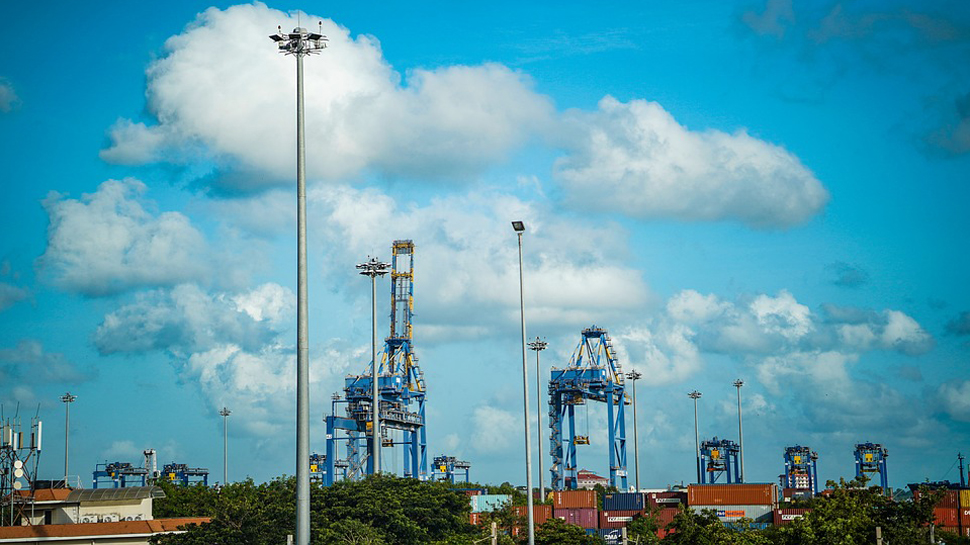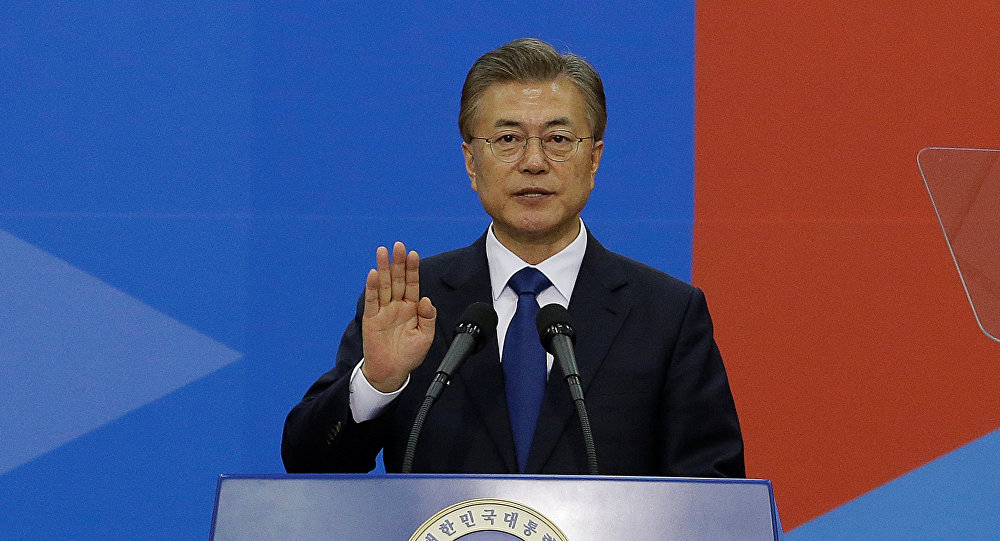|
|
Post by andreaforexmart on Jun 7, 2018 1:02:51 GMT -5
EU’s Malmström Against Trump’s Tariffs
The European Union is trying to convince the countries Canada, Japan, and Mexico to work together against the aggressive trade policies imposed by US President Donald Trump, according to European Commissioner for Trade Cecilia Malmström today. Malmström further stated that EU is reaching out various countries to form alliances and arrange a trade union who believe in international laws. Last week, the EU announced levying retaliatory tariffs up to €2.8 billion-worth of U.S. exports, which includes peanut butter and motorboats. While Canada, India, Japan, and Mexico will do the same thing. The European Commissioner described Trump’s tariffs on steel and aluminum as “not legitimate” The Swedish Commissioner also cautioned regarding the potential risk towards the global economy. Both the United States and Europe set up the international policy and organizations to govern trade, but the US broke the rules that is why the EU has to take necessary action, Malmström said. 
|
|
|
|
Post by andreaforexmart on Jun 7, 2018 22:15:52 GMT -5
The current Money Fall contest has already started on June 4, 2018 and will end on June 8, 2018.
You can register for the next competition which will take place from June 11, 2018 to June 15, 2018
Note:
Registration for the next competition finishes 1 hour before the contest starts.
|
|
|
|
Post by andreaforexmart on Jun 14, 2018 2:26:05 GMT -5
U.S. Consumer Prices Rose to a Record High of 2.8 Percent Over Six Years
The consumer price of the U.S. increased slightly in May despite the slower growth of gasoline costs, implying moderate inflation in the economy. The inflation report of the Labor Department was released prior to the two-day policy meeting on Tuesday. With the steady growth of inflation and anticipated tightening of the labor market, the Federal Reserve is motivated to raise interest rates for the second time this year on Wednesday. The CPI data rise by 0.2 percent in the previous month while the cost of food remains the same. A similar increase of CPI was seen in April. After a year in May, the CPI gained 2.8 percent, which has been the biggest growth since February 2012, following its increase of 2.5 percent in April. Gaining 0.2 percent of the CPI, excluding volatile food and energy components, was due to the rebound of new motor vehicle prices and a pickup in the cost of health care, after rising to 0.1 percent in April. In turn, this raised the year-on-year gain of the core CPI by 2.2 percent from 2.1 percent in April. It was the largest growth since February last year. After the weak reading last week, the annual inflation measures are adjusting higher. Both the CPI and core CPI growth in the previous month met the expectations of economists. The Federal Reserve moves on a different inflation measure which is just lower than the two percent target. Economists have different perspectives on whether policymakers will implement more rate hikes in the statement following the rate decision on Wednesday. Meanwhile, the dollar is moving steadily against a basket of currency which is immediately after the data fell slightly than the U.S. Treasury yields, which is trading lower compared a slightly higher U.S. stock index futures. 
|
|
|
|
Post by andreaforexmart on Jun 19, 2018 23:49:58 GMT -5
SNB Keeps an Ultra Loose Monetary Policies
The Swiss National Bank announced the decision to maintain an ultra-loose monetary policy on Thursday and analysts expectations matched from the survey by Reuters giving a unanimous answer. They reiterated the fragility or exchange rates after the strengthening of the Swiss franc in the past few weeks and began low this year. At the same time, Chairman Thomas Jordan said that it would be too early to raise rates in Switzerland amid low inflation. Another issue is the political uncertainty in Italy which will affect the eurozone in the future and it is important for the central bank to be heedful in this situation, according to an analyst. Forty experts expect the SNB to maintain the target range to be 1.25 percent to minus 0.25 percent in three months on the offered rate of London Interbank, which has been the ongoing target for the past three-and-a-half years. Also, they expect a negative interest rate of 0.75 percent deposits to be sustained where the commercial bank held a certain value as one of the important tools used by the bank. Changes in the LIBOR target range is anticipated to happen soonest at the end of the year based on the UBS, while the median consensus deems to set at the end of next year. Analyst of Credit Suisse initially thought the central bank to raise their rates as early as 2019 based on the economic strength of Switzerland, with a forecast growth of 2.2 percent this year. The Global Head of Investment Strategy & Research at Credit Suisse Group AG, Nannette Hechler-Fayd’herbe said, “Our base case scenario is where the ECB is considering a first interest rate increase themselves by mid-2019, and the SNB could move a quarter before.” Connoting the reaffirmation of central bank’s decision. However, she added that these two would move together as they are ‘economically interlinked’. Her expectation is a gradual increase of rates until it reached around 1.20 against the euro in a year. 
|
|
|
|
Post by andreaforexmart on Jun 22, 2018 1:43:17 GMT -5
France’s Economic Growth Sharp Decline in 2018
The economy of France dropped from 2.3 percent to 1.7 percent this year, according to the forecast of National statistics, which is another financial problem of President Emmanuel Macron in reducing costs of the government. Macron’s administration aims to reduce spending and maintain the deficit targets of the European Union with 2.0 percent target growth for 2018. Growth has been steady and there are no particular concerns, remarked by Finance Minister Bruno Le Maire on Monday. However, statistics agency through that the government would fail to meet the target as it would be pulled lower by a strong euro and increasing oil prices as some of the influential factors. Gross Domestic Product increased by 0.3 percent in the second quarter, higher than the previous quarter’s rate of 0.2 percent. Further increased by 0.4 percent in both the remaining two factors in twelve months with 1.7 percent. The Central bank of France revised lower their target growth of 1.8 percent in a year, following a bright year in 2017. It has changed as if covered by clouds in France and the eurozone as described by the head of Insee's economic outlook division Frederic Tallet. This includes external factors over which the nation has less control such as global trade war, higher costs of oil prices, a strong euro, as well as, political uncertainties in Europe, notwithstanding the new far right-eurosceptic coalition in power in Italy. Moreover, domestic concerns including sluggish household consumption and nearly three months of unabating train strikes that will likely bring down the second-quarter growth by 0.1 percentage points. The forecast says that the corporate investment will slow down from 4.4 percent to 3.1 percent over the year, while household investment would decline from 5.6 percent in 2017 to 1.6 percent. On a brighter side, good progress was seen on the trade and unemployment concerns. Unemployment will only decline slightly which is currently twice the value of Germany or Britain. The forecast rate is 8.8 percent at the end of the year from 9.0 9.0 percent at the end of last year. A slow start of exports in 2018 is expected to change in the second quarter with the help of large demand in the aviation and shipbuilding sectors, according to the agency. On the other hand, households will gain from the reduction in both of the residency and payroll taxes. 
|
|
|
|
Post by andreaforexmart on Jun 26, 2018 0:00:29 GMT -5
The current Money Fall contest has already started on June 25, 2018 and will end on June 29, 2018.
You can register for the next competition which will take place from July 2, 2018 to July 6, 2018.
Note:
Registration for the next competition finishes 1 hour before the contest starts.

|
|
|
|
Post by andreaforexmart on Jul 1, 2018 20:54:53 GMT -5
The current Money Fall contest has already started on July 2, 2018 and will end on July 6, 2018.
You can register for the next competition which will take place from July 9, 2018 to July 13, 2018
Note:
Registration for the next competition finishes 1 hour before the contest starts.

|
|
|
|
Post by andreaforexmart on Jul 9, 2018 2:17:17 GMT -5
The current Money Fall contest has already started on July 9, 2018 and will end on July 13, 2018.
You can register for the next competition which will take place from July 16, 2018 to July 20, 2018
Note:
Registration for the next competition finishes 1 hour before the contest starts.

|
|
|
|
Post by palmfxmart on Jul 12, 2018 2:19:47 GMT -5
India Becomes 6th Largest Economy and Beat France The World Bank issued the updated economic figures for previous year which showed that India held the sixth rank for the world’s largest economy and pushed France lower into the seventh spot. The gross domestic product (GDP) of India reached $2.597 trillion at the end of 2017 while France’s GDP amounted to $2.582 trillion. The Indian economy had a strong rebound since July last year following the declines in the past quarters due to economic policies imposed by the Prime Minister Narendra Modi's administration. There are about 1.34 billion Indian citizens which would likely make India the world’s highest population against 67 million French inhabitants. This explains that India’s per capita GDP remains a portion of France which is approximately 20 times higher according to the World Bank. The consumer and manufacturing expenditure served as the main drivers for India’s economy in 2017 after Modi’s demonetization program of large banknotes way back in 2016 as well as the unorganized new tax system of the country. India was able to double its GDP in a span of a decade and anticipated to power ahead as Asia’s economic engine as China wind down. The International Monetary Fund stated that India is predicted to grow by 7.4 percent in the current year and 7.8 percent in 2019, supported by tax reform and household spending. This was compared to the world’s forecast average expansion of 3.9 percent. The Centre for Economics and Business Research mentioned that India would likely beat the GDP of France and the United Kingdom at the end of 2017. The London-based consultancy further told that there is a modest chance for the Indian economy hit the third place for the world’s largest economy by 2032. Last year, Britain was regarded to be the fifth biggest economy in the world with a GDP worth $2.622 trillion. Meanwhile, the United States hailed as the number one economy followed by China, Japan, and Germany.
|
|
|
|
Post by palmfxmart on Jul 13, 2018 2:05:23 GMT -5
Irish Economy to Reach Highest Growth in 2018  The economy of Ireland is projected to reach its highest record in 2018 based on the latest outlook of the European Commission. Ireland’s gross domestic product (GDP) is projected to expand by 5.6 percent this year and 4 percent in 2018, supported mainly by domestic demand. Meanwhile, the estimate of the EU executive shows that eurozone GDP has the potential to increase by 2.1 percent, which is below the 2.3 percent forecast according to its May report. Since Ireland is a very open economy, the country is potential to have revisions in the international taxation and trade environment. While the activities of multinational corporations could affect the headline GDP growth. In the near term, the commission expects that the domestic economic activity could possibly grow at a strong momentum. In general, the commission reduced its predictions for the EU economic growth for this year because of trade adjustments due to increasing oil prices and tensions with the United States which drove the EU inflation higher. There is an optimistic outlook for the whole year despite better trade with the United States. Forecasts were mostly taken prior to the United States raising their stakes through 10 percent tariffs on an extra $200 billion worth of Chinese imports, announced on Tuesday. The worsening trade war has added uncertainty on the outlook that also affected the Chinese financial markets in the past few weeks. With sluggish credit expansion and domestic demand ranging from government-funded infrastructure investment to consumer spending, China’s economy seems to be showing signs of struggle and weakening. The huge export sector may add impact on tariffs with the U.S. giving 25 percent tariffs on $34 billion of Chinese imports on Friday, which then triggered Beijing for rapid retaliatory measures on the same amount of U.S. Chinese exports to China. Moreover, the uncertainty caused by trade war pushed the corporate borrowing costs higher in reaction to soften the economic effect of a multi-year easing on riskier lending. More cash were accumulated through lesser reserve requirements for lenders three times this year. |
|
|
|
Post by palmfxmart on Jul 16, 2018 21:41:45 GMT -5
Drop in Inflation Rate of Malaysia The Annual inflation rate of Malaysia declined to 1.3 percent in June from 1.8 percent the month earlier due to the withdrawal of a goods and services tax based on the poll by Reuters. A survey of ten analysts by Reuters forecast for June ranged from 0.6 percent to 1.9 percent. The central bank of Malaysia kept the interest rates at 3.25 percent at a policy meeting on July 11 despite sluggish inflation and steady growth. The new government by Prime Minister Mahathir Mohamad starting May 9 general election abolished the consumption tax of 6 percent on June 1, which was implemented for three years. According to economists, the elimination of goods and services tax affect the inflation and pushed it lower in June, despite the higher cost of transportation and food during the month of fasting in Ramadan and subsequent Eid al-Fitr celebrations.
|
|
|
|
Post by palmfxmart on Jul 17, 2018 2:56:46 GMT -5
South Korea to Unite with Asean and India The 1950-53 Korean War ended under the Presidency of South Korean leader Moon Jae-in and successfully settled regional programs for economic, political, security, social and cultural. While the previous presidents including Kim Dae-Jung, Roh Moo-hyun, Lee Myung-bak and Park Geun-Hye attempted to fix similar issues but failed to do so. Whenever the country’s leaders turned their attention to Southeast and South Asia, problems will always come up within the Northeast especially in the Korean Peninsula, which causes immediate distraction and inconsistency. However, President Moon tried a new method instead of using the same strategy, he positioned South Korea within the ongoing alliance with the Indo-Pacific region. Mr. Moon travels within and outside the country and promised to take a visit on Asean nations on the first two years of his leadership.
|
|
|
|
Post by palmfxmart on Jul 18, 2018 1:46:48 GMT -5
Weak Income Growth In UK Despite High Employment Income growth in Britain showed down at its weakest rate in six months despite positive figures in record employment. This further adds concerns whether interest rates will be raised since the global financial crisis. Average weekly earnings grew by 2.5 percent on the year between the period of March and May at a lesser rate with 2.6 percent at three months earlier which was the lowest since September last year based on the report by the Office of National Statistics. Momentum picks up in the British economy after a sluggish first three months of the year due to heavy snow downfall and the central bank is considering being affected by the speed limit that would begin to raise the inflation rate. The BoE Governor Mark Carney mentioned that the economy as a whole, as well as, the pay is rising similar to the forecast in May that paves the way for a rate hike in August. Yet, a central bank deputy said that rising figure did not exceed the recent values of .5-3.0 percent range with the purpose of 3 percent growth rate by the end of the year. Also, according to him, there have been multiple ‘false dawns’ regarding the growth rate of the income where there could still be a spare storage in the labor market than the initial estimate of the central bank. There is also another record employment rate and the number of job openings has also reached a record new. Thus, it can be said the labor market is progressing steadfastly based on the reports, as described by the ONS statistician Matt Hughes.
|
|
|
|
Post by charot on Jul 18, 2018 20:03:50 GMT -5
The current contest has already started on July 16, 2018 and will end on July 20, 2018. You can register for the next competition which will take place from July 23, 2018 to July 27, 2018 (Terminal time). . Note: Registration for the next competition finishes 1 hour before the contest starts.  |
|
|
|
Post by palmfxmart on Jul 19, 2018 2:18:02 GMT -5
NZ Economy Driven by Rural-Based Firms The provincial economies of New Zealand were able to drive economic growth, reinforcing the price recovery in the dairy products as mentioned by Infometrics chief forecast Gareth Kiernan on Wednesday. The regional spending activity was able to improve faster than the activity in the main centers. While prices for exports commodity remained at high levels. Moreover, the government’s simulatory fiscal policy also ease down the decline. Prior to the approval of the May Budget, the NZ expenditure options was restrained by the said policy which includes fees-free courses in tertiary education as well as the Families Package. Forecasts from the Treasury shows surplus growth by $7.3billion in 2022, with an expected increase in government revenue and the administration projected for a further boost in spending while keeping its records written. On the other hand, the lack of workers (skilled and unskilled) continue to hold back the NZ economic growth. Wage inflation expanded in the previous quarter and was able to trigger price pressure across the board for the next few years. In the provincial areas, issues about the lack of labor and effects of Mycoplasma bovis are the most critical problem in the main centers, as the world economy would likely weaken because of the trade dispute between the US and China. Low business reliance indicates that those companies who are domestically-centered were uncertain to hire or invest. Meanwhile, households were careful on their expenses due to higher oil prices and sluggish housing market.
|
|